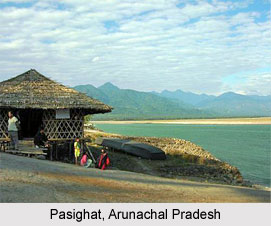 History of Upper Siang District is quite ancient and dates back to the period when the north-eastern Indian state of Arunachal Pradesh was an independent area which was devoid of any political control. However, this was only till 1826 to 1861, when the Anglo-Burmese war occurred. The Upper Siang region was declared as a non-regulated area in the time between 1826 to 1861. Arunachal Pradesh continued to be under the administrative control of Bengal until the year 1874, when scheduled district regulation was passed and a separate post of Chief Commissioner was made. This Indian state was able to obtain a distinct identity of its own following its separation from Assam. After its separation, it was renamed as North East Frontier or NEFT after the Government of India, Foreign and Political Department Notification which was passed in the year 1914. Thereafter, the present-day Upper Siang became a portion of NEFT`s Central Section and it controlled Administrative Control of Political Officer.
History of Upper Siang District is quite ancient and dates back to the period when the north-eastern Indian state of Arunachal Pradesh was an independent area which was devoid of any political control. However, this was only till 1826 to 1861, when the Anglo-Burmese war occurred. The Upper Siang region was declared as a non-regulated area in the time between 1826 to 1861. Arunachal Pradesh continued to be under the administrative control of Bengal until the year 1874, when scheduled district regulation was passed and a separate post of Chief Commissioner was made. This Indian state was able to obtain a distinct identity of its own following its separation from Assam. After its separation, it was renamed as North East Frontier or NEFT after the Government of India, Foreign and Political Department Notification which was passed in the year 1914. Thereafter, the present-day Upper Siang became a portion of NEFT`s Central Section and it controlled Administrative Control of Political Officer.
In the year 1919, the Central Section as well as the Eastern Section of the same piece of land was termed as Sadiya Frontier Tract and its headquarters was present at Sadiya. Sadiya Frontier Tract was divided into two separate regions in the year 1948. These separate regions were named as Mishmi Hills District and Abor Hills District. After India gained independence from the British Raj, Arunachal Pradesh was categorised under Part B of the 6th schedule of the Indian Constitution as a portion of the state of Assam. In the year 1951, this area was marked as North-East Frontier Agency or NEFA. It was classified under NEFA (Administration) Regulation in the year 1954 was declared as a part of Assam during the period 1950 to 1965. Abor Hills District was later renamed as Siang Frontier Division.
The Siang Frontier Division was decided to be renamed as Siang District in the year 1965. During this time, the NEFA administration was shifted to the Ministry of Home Affairs. The Political Officer of Siang district was given the designation of Deputy Commissioner. During the year 1967, the NEFA Panchayati Raj Regulation Act was passed by the Government of India. According to this act, the status of Gram Panchayat was accorded to the Traditional Village Councils, armed with the Agency Council at the Apex Level of the Panchayati Raj. On 20th January, 1972 the NEFA became a Union Territory by the name of Arunachal Pradesh. Pradesh Council replaced the Agency Council and later it was transformed into Legislative Assembly in the year 1975. During 1978, the first Election to 30 members Legislative Assembly was held.
Siang district was divided into West Siang district and East Siang district in the year 1980. The current-day Upper Siang region continued to be under the jurisdiction of East Siang district. Pasighat was the place where its headquarters was located. On 20th February, 1987, the Union Territory was given the status of a permanent statehood. The number of members belonging to the Members of Legislative Assembly increased from 30 to 60. Eventually, Upper Siang district was born from the East Siang district in the year 1994, while its headquarters were based at Yingkiong.



















